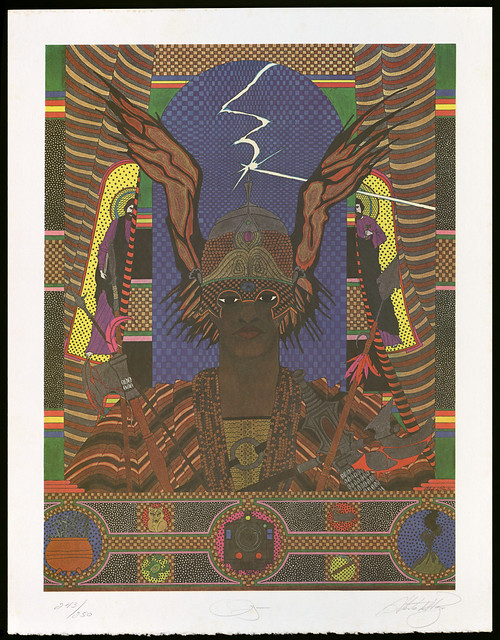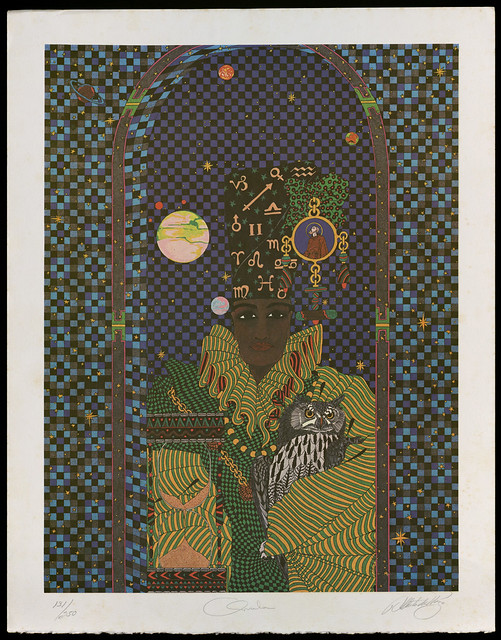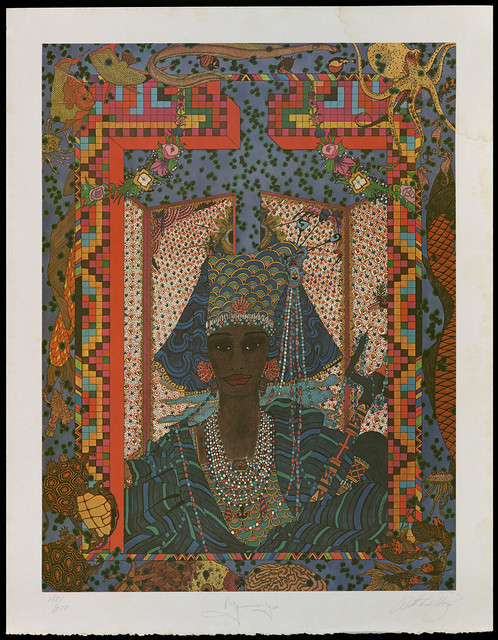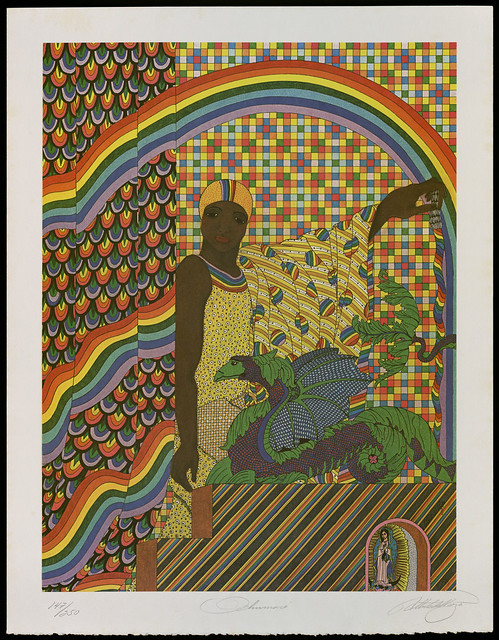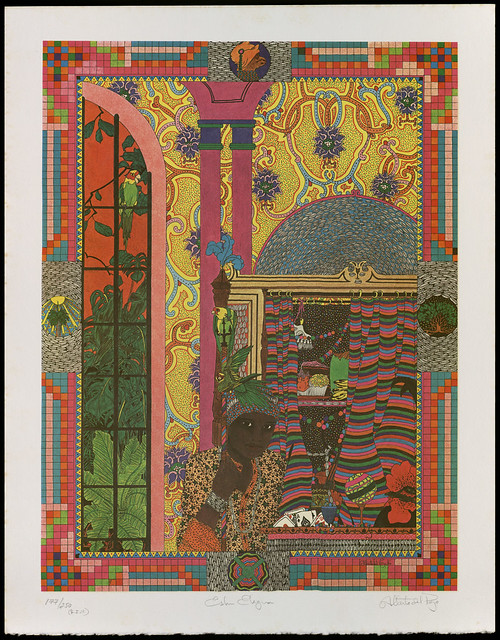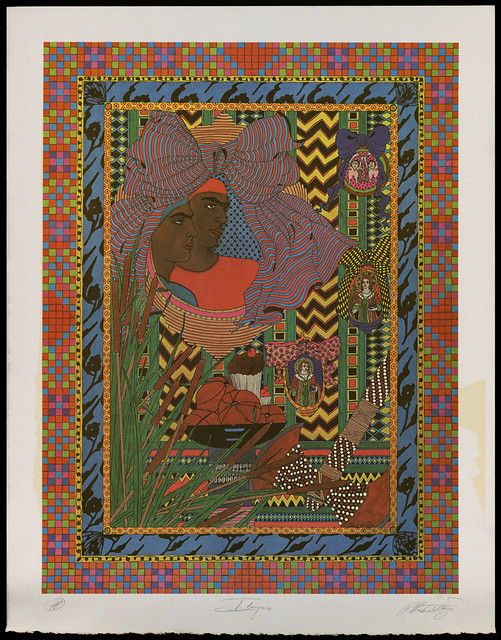Writing blanks: "also known as 'school pieces' or 'Christmas pieces', these were single sheets printed from copper or wood engravings, issued by print sellers (and, later, children's booksellers), and sold to children across a broad socio-economic spectrum. 'Regularly published at least twice a year', they were intended as a form of sampler, the child filling in the blank space in the centre of a sheet with a set piece in her or his best penmanship. They were sold in book and print shops 'for the use of writing schools, at the vacations of Lady-day-Midsummer-Michaelmas-Christmas, &c.', as well as by street criers. Schools, and, in one recorded example, a workhouse overseer, distributed them.
Published between about 1660 and 1850, these highly ephemeral "school pieces" were increasingly popular in the second half of the eighteenth century, when they were published in large numbers, a development contemporary with the expansion of the children's book trade. Children's booksellers began to issue writing sheets at this time; popular printsellers continued to do so. For some surviving sheets, the engraver and / or the writing master responsible for the design can be identified, although in many cases the former would be the printseller or one of his craftsmen.
Decorated with engravings illustrating lessons in history, geography, natural science, and scripture as well as Aesop's fables and popular works of fiction and verse for children, they provide a valuable record of a widely ranging formal and informal curriculum. Many also show scenes from contemporary life-the wild beasts at the Tower of London, a specific military review or theatre production, a naval battle, or a balloon ascension in Hyde Park, suggesting a juvenile familiarity with and participation in popular culture and current events (political, cultural and social)."
{Source by historical children's book scholar, Jill Shefrin}
All of the images below (from the Oxford Digital Library) were spliced together from ten or more screen shots. Please click through to enlarged versions to see all the detail and help me justify the splicing masochism. The subject metadata is lifted from the Oxford site.
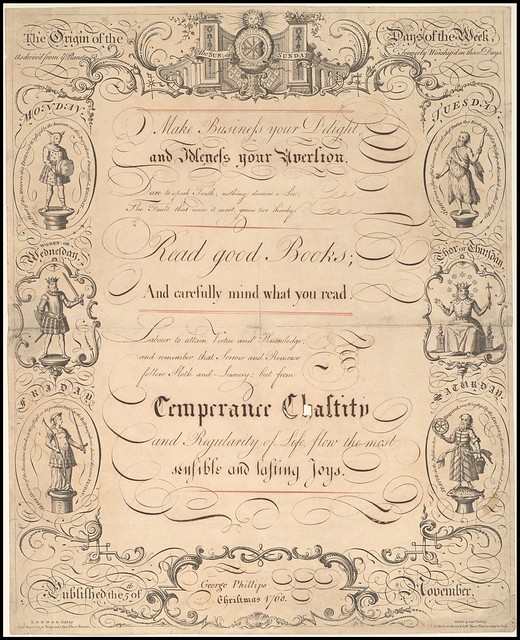
ye Planets Formerly Worship'd on those Days
Calligrapher: George Phillips, 1768
Subjects: Penmanship; Planets; Days; Etymology; Gods; Idols; Generals; Tuisco -- German general; Woden -- god; Thor -- god; Eriga -- god; Seator -- god
Make Busineſs your Delight,
And Idleneſs your (?)Averſion
Dare to speak Truth; nothing deserves a Lie;
The Fault that needs it most, grows (?)true thereby
Read good Books;
And carefully mind what you read.
Labour to attain Virtue and Knowledge;
and remember that Sorrow and Remorse
follow Sloth and Luxury: but from
Temperance, Chaſtity and Regularity of Life flow the most
sensible and lasting Joys
George Phillips, Christmas 1768

Author/Publisher: William Belch, 1820
Subjects: God; Eden; Creation; Sin; Penmanship; Adam Biblical figure; Eve Biblical figure; Creation; Angels; Animals; Elephants; Horses; Lions; Cattle; Peacocks; Tigers; Birds; Whales; Ostriches; Turtles; Foxes; Snakes; eye of God
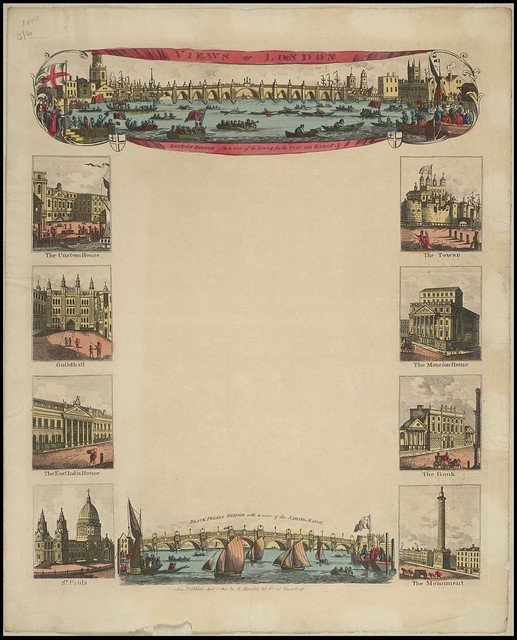
Author/Publisher: Robert Harrild, 1814
Subjects: Penmanship; Rivers; Bridges; Rowboats; Spectators; Customs houses; Towers; Banks; Cathedrals; Monuments; Sailboats

Author/Publisher: Robert Laurie and James Whittle, 1802
Subjects: Penmanship; Cries; Cries; Peddlers; Oysters; Chairs; Watchmen; Lanterns; Fish; Toys; Mules; Oranges; Wheelbarrows; Men; Women; Children; Clothing and dress; Vues d'optique; peepshows; shoe laces; primroses; oars
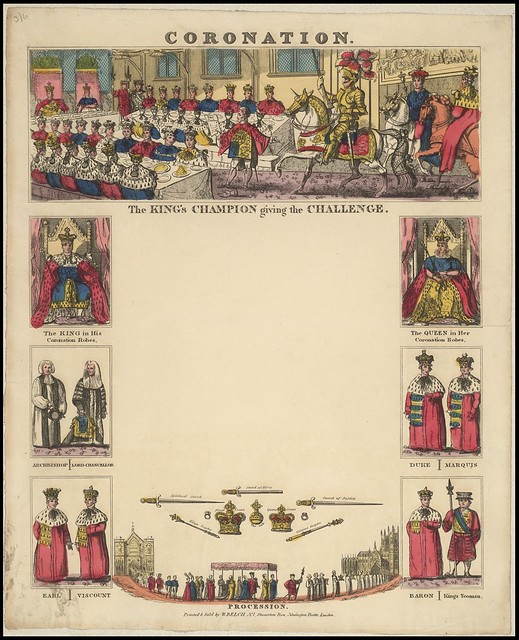
Published by William Belch, 1837
Subjects: Coronations; Penmanship; William IV King of Great Britain, 1765-1837; Coronations; Horses; Arms and armament; Kings; Queens; Nobility; Bishops; Rites and ceremonies; Parades and processions; Daggers and swords; Adelaide -- Queen, consort of William IV, King of Great Britain
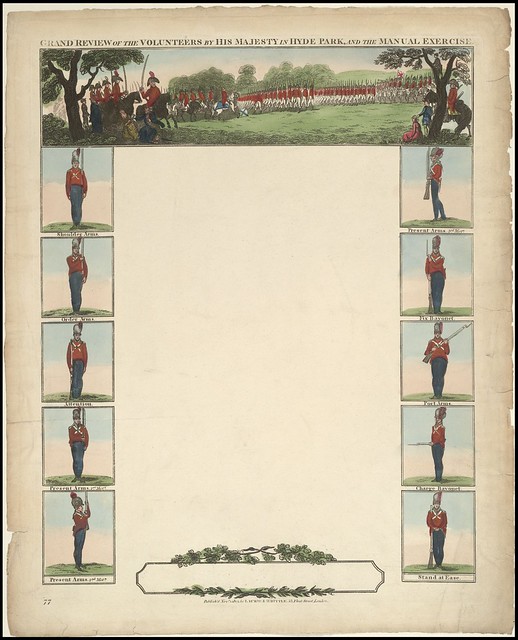
in Hyde Park, and the Manual Exercise
Author/Publisher: Robert Laurie and James Whittle, 1803
Subjects: Penmanship; Military education; Military inspections; Kings; Military training; Bayonets; Military uniforms

Written and published by Edward Langley [undated]
Subjects: Penmanship; Cook, James, 1728-1779; Indigenous peoples; Homicides; Penguins; Shooting; Sea lions; Seas; Dancing; Canoes; Islands; Sailing ships; killing of penguins
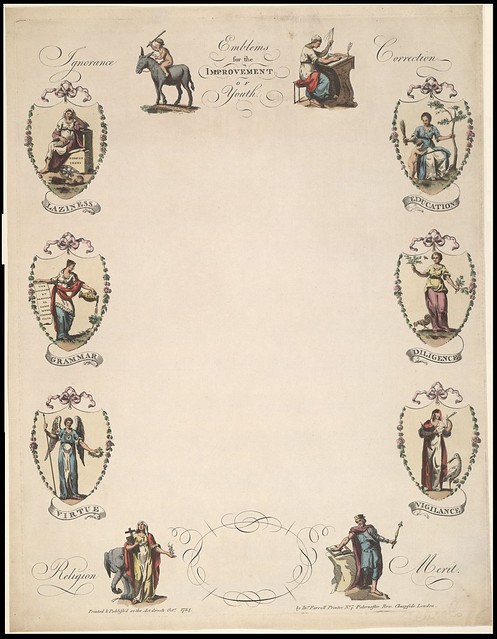
Printer/publisher: John Farrell, 1784
Subjects: Penmanship; Education; Donkeys; Desks; Whips; Laziness; Women; Urns; Scrolls; Angels; Mothers and children; Trees; Flowers; Chickens; Reading; Lamps; Cranes (birds); elephants; Saints; Kings; blindfolded boy; quill
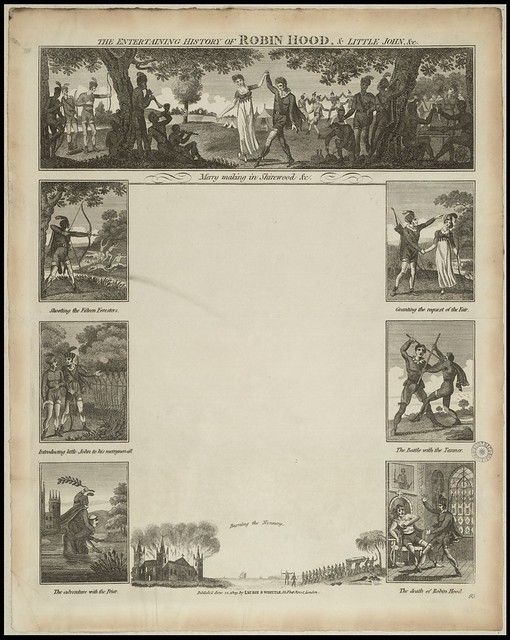
Author/Publisher: Robert Laurie and James Whittle, 1809
Subjects: Penmanship; Robin Hood (Legendary character); Dancing; Forests; Eating and drinking; Musicians; Bows (archery); Shooting; Homicides; Fighting; Monks; Death; Convents
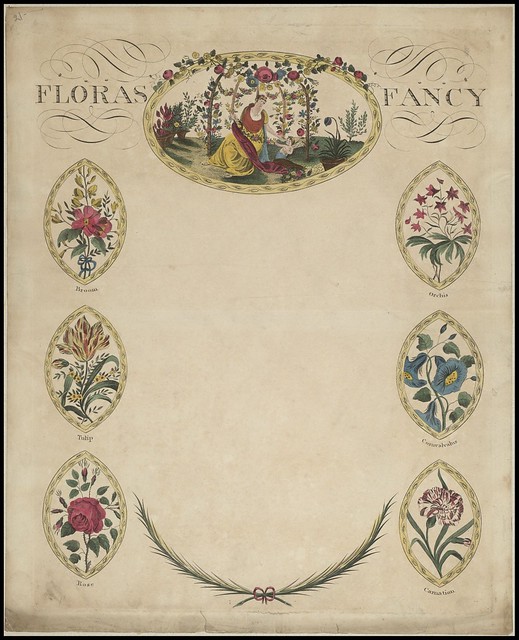
Publisher unknown, undated
Subjects: Penmanship; Gardens; Flowers; Arbors (bowers); Cupids; Orchids; Tulips; Roses; Carnations; broom (plant); convolvulus; Flora

Taken from the Arabian Nights Entertainments
Published by Robert Laurie and James Whittle, 1803
Subjects: Penmanship; Ali Baba (Legendary character); Gangs; Caves; Treasure-trove; Gold; Poisons; Tambourines; Homicides; Marriage; Morgiana; Cassim; Mustapha
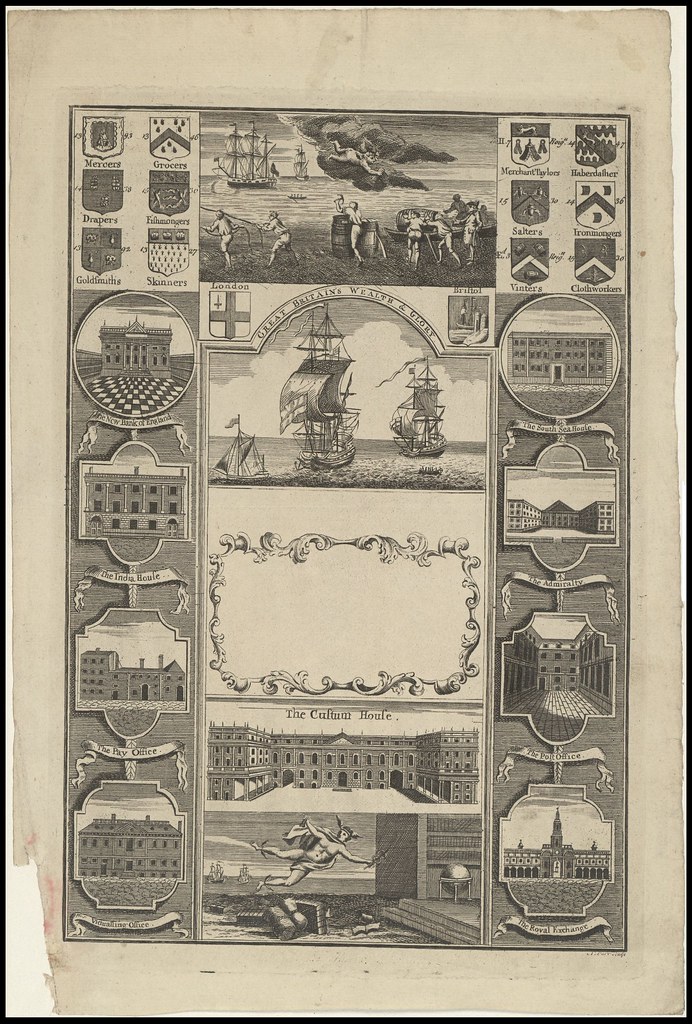
Engraved by N Carr; undated; publisher unknown
Subjects: Penmanship; Commerce; East India Company; South Sea Company; Mercury (Roman deity); Coats of arms; Seas; Sailing ships; Barrels; Customs houses; Banks; Post offices; Globes; Worshipful companies
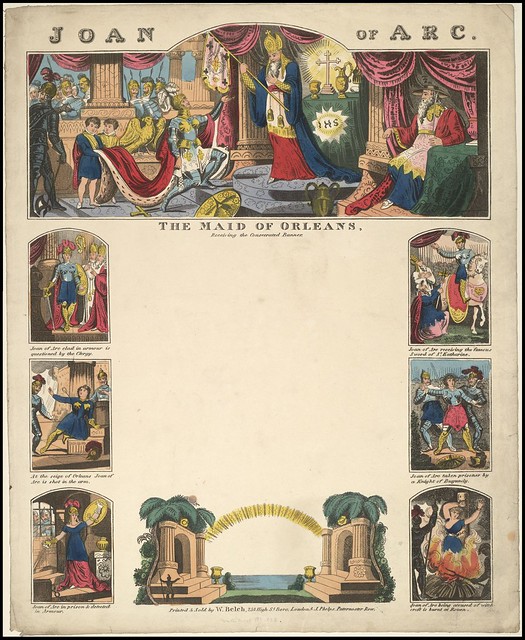
Published by J Phelps & W Belch, 1828
Subjects: Orléans (France); History; Siege; 1428-1429; Penmanship; Banners; Women martyrs; Joan of Arc, Saint, 1412-1431; Banners; Bishops; Cathedrals; Clergy; Daggers and swords; Arms and armament; Horses; Wounds and injuries; Prisoners; Burning at the stake
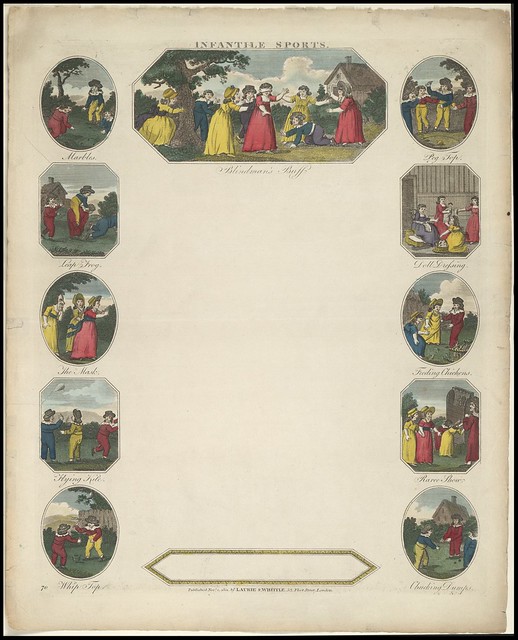
Author/Publisher: Robert Laurie and James Whittle, 1801
Subjects: Marbles (Game); Tops; Penmanship; Blind man's bluff; Dolls; Toys; Masks; Chickens; Kites; Vues d'optique; Games; Children playing; Children playing with marbles; Children jumping
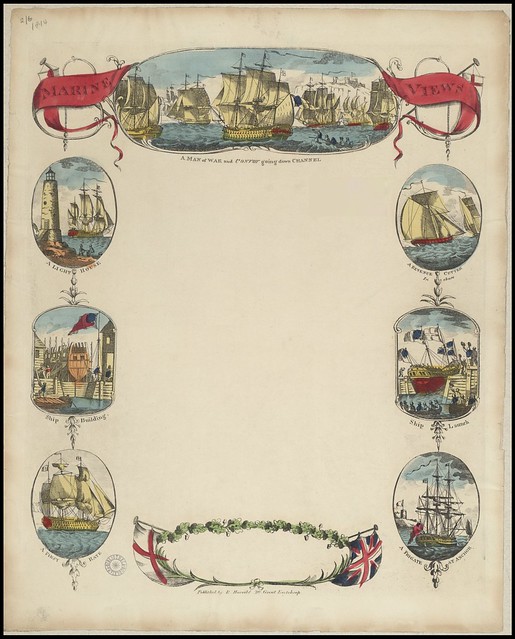
Author/Publisher: Robert Harrild, 1814
Subjects: Penmanship; Sailing ships; Seas; Rowboats; Lighthouses; Boat and ship industry; Launchings; frigate
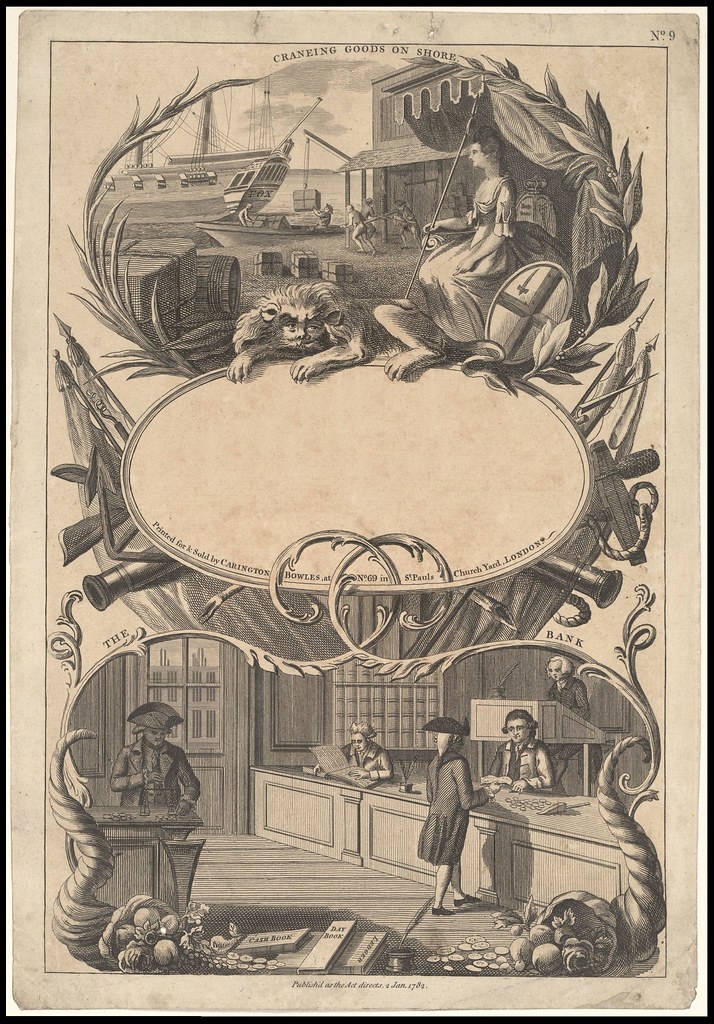
Author/Publisher: Carington Bowles, 1782
Subjects: Penmanship; Commerce; Britannia; Harbors; Piers and wharves; Hoisting machinery; Lions; Banks; cash book; day book; ledger; clerks
**Here's the same illustration with the removed text in the writing field
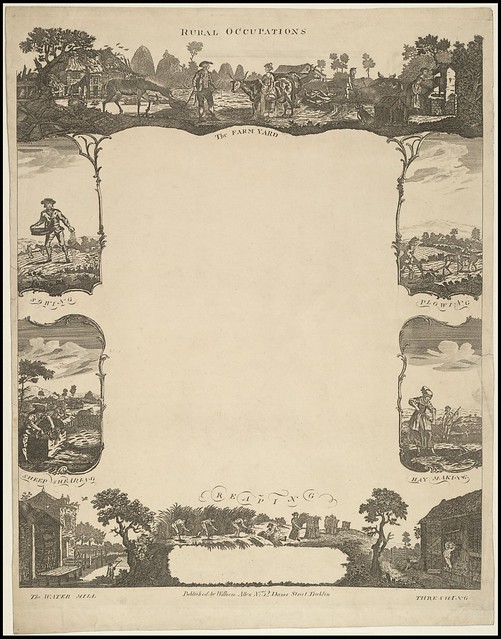
Published in Ireland by William Allen, undated
Subjects: Agriculture; Penmanship; Country life; Plowing; Sheep shearing; Waterwheels; Threshing; Harvesting; Men; Women; hay making
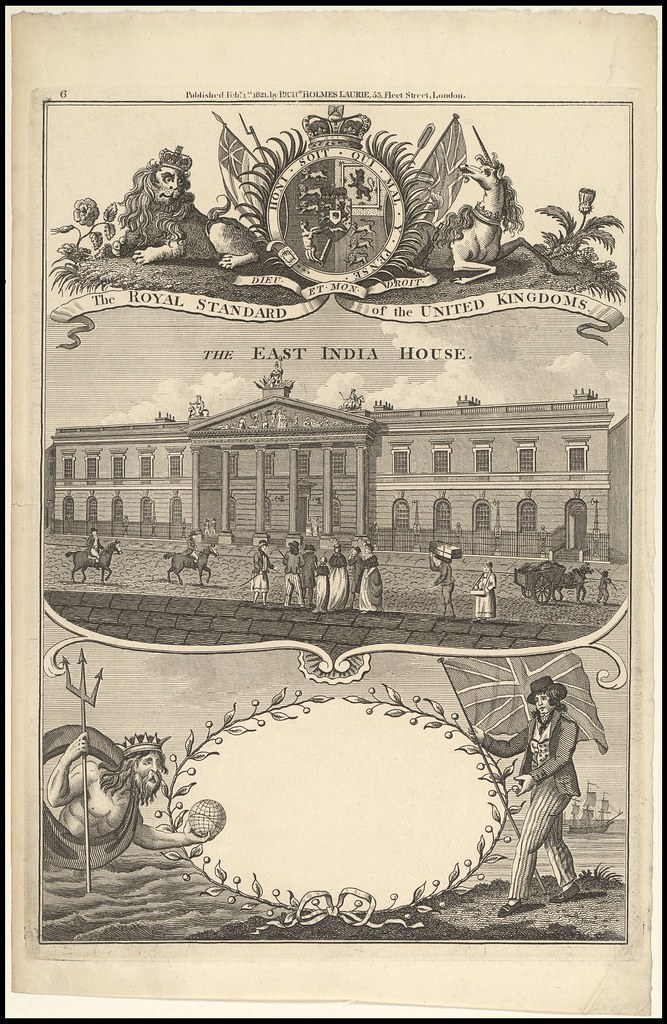
Author/Publisher: RH Laurie, 1821
Subjects: East India Company; Prints -- 19th century; Emblems, National; Neptune (Roman deity); Coats of arms; Lions; Unicorns; Sailors; Sailing ships; Flags; royal coat of arms
All the images in this post were spliced together from illustrations available from "Writing Blanks, Board Games and other Educational Games of the 18th and 19th centuries from the John Johnson and Harding Collections" at the Oxford University Digital Library.
Previously: kids, ephemera.
